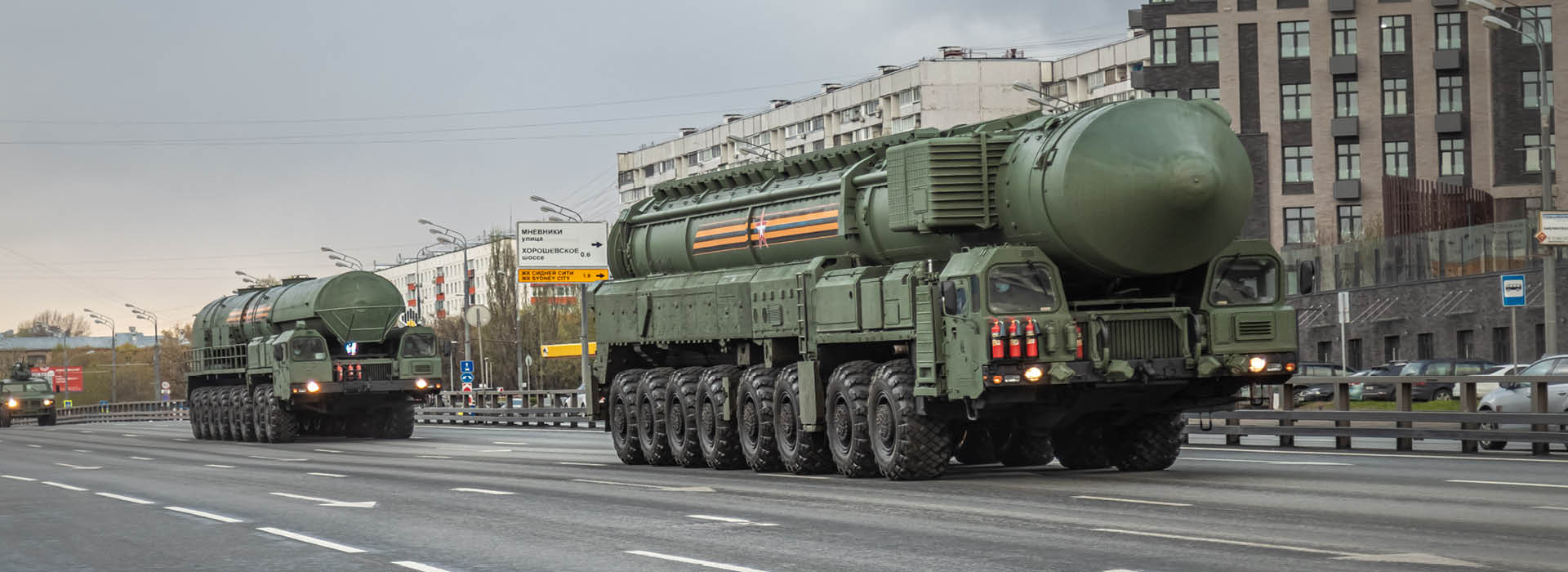And suddenly the gun was on the table. What most sensible people saw, until recently, as the most unlikely scenario is now being accepted as a major part of the public discourse and, all indications are, an integral part of each side’s negotiating narrative. The daily repetition and analyses of the possibility of using tactical or even strategic nuclear weapons in a generalized NATO-Russia conflict has led a large number of European citizens to snap up iodine preparations from pharmacies, stupefied as they follow a conversation that is beyond all reason.
With humanity obviously stunned at seeing the gun on the table, let’s take a quick look at the numbers that merely serve to confirm that in this scenario there will be no winners or losers if we put the gun to our head.
For the record, a single nuclear warhead could kill hundreds of thousands of people, with permanent and catastrophic humanitarian and environmental repercussions.
The combined arsenals of Russia, the United States, the United Kingdom, France, China, India, Pakistan, Israel and possibly North Korea contain some 13,000 nuclear weapons, most of which are many times more powerful than the atomic bomb dropped on Hiroshima.
It is worth noting that of the 6,257 nuclear warheads that Russia possesses, 1,458 are actively deployed (current START II treaty limits both the U.S. and Russia to 1550 deployed total), 3039 are inactive but available to be made active, and 1,760 are retired and awaiting dismantling. Similarly, of the 5,550 US nuclear warheads, 1,389 active, 2,361 inactive but available, and 1,800 in line to be dismantled. North Korea according to various sources does not currently appear to have any nuclear warheads, however many organizations point out that because it possesses the material to build 40-50 nuclear warheads it is very likely that it already has a nuclear arsenal.
Of the approximately 13,000 nuclear warheads in the world, over 9,000 are in military stockpiles for use in missiles, aircraft, ships and submarines. The remaining nuclear warheads have been withdrawn, but remain relatively intact and await dismantlement. Of the nuclear warheads in military stockpiles, some 3,000 have been deployed with operational forces (on missile bases or bombers). Of these, some 2,000 warheads from the U.S., Russia, Britain, and France are on high readiness, primed for use in the near future
NATO countries hosting US nuclear weapons
Belgium, Germany, Italy, the Netherlands and Turkey are the five NATO countries that host US nuclear weapons.
Although the governments of these countries have never officially declared the existence of these weapons, political figures have from time to time confirmed this practice.
The agreement on the sharing of nuclear weapons is part of the defense policy of the North Atlantic Treaty Organization (NATO). In peacetime, nuclear weapons stored in non-nuclear countries are guarded by U.S. forces, while in wartime time a dual-code system is activated, under which both the host country and the U.S. have to approve the use of weapons launched by the aircraft of the former.
These weapons were deployed in these countries during the Cold War, but by the end of that period, and given that some of the states of the former Eastern Bloc joined the European Union and even NATO itself, many see this practice as destabilizing and dangerous. In this context, it is worth noting that at times there has been strong opposition to the placement of these weapons in Europe, including from certain host governments, such as Germany, Belgium, and the Netherlands, which have asked for the removal of U.S. nuclear weapons from their countries.
These weapons are stored in WS3* underground vaults at various NATO airfields around the world, and the Permissive Action Link (PAL) codes used to arm them remain in U.S. hands.
*The Weapon Security and Survivability System, or Weapons Survivability and Security System (WS3) includes electronic controls and underground vaults built into the floors of Protective Aircraft Shelters (PAS) at various NATO military airfields around the world. These vaults are used for safe special weapons storage, typically of tactical nuclear weapons.
With information from:
International Campaign to Abolish Nuclear Weapons (ICAN)
Federation of American Scientists
